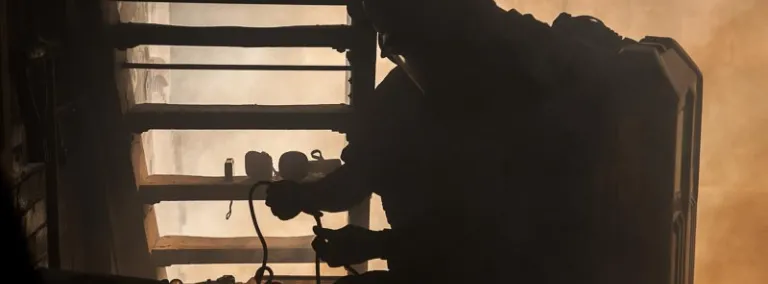ERT expansion reflects facility growth
In 2019, the Emergency Response Team added 11 new members to achieve 24/7 on-site safety coverage at Sanford Lab.
With backgrounds as paramedics, advanced emergency medical technicians, rope rescuers and firefighters—the new Emergency Response Team (ERT) members bring tremendous diversity in their safety experience to Sanford Underground Research Facility (Sanford Lab).
“Since January, we have added eleven new members to the team, two of which were Sanford Lab employees who are transitioning into this role,” said Paul 'Woody' Hover, site safety specialist.
Previously, the ERT was comprised solely of volunteer members who had other full-time roles on-site. As Sanford Lab has grown, the need for a around-the-clock, full-time personnel dedicated to rescue and safety maintenance became evident. “We will maintain our part-time volunteer team, but this growth allows us to have 24/7 on-site safety coverage,” Hover explained.
One of the team’s new, full-time members is Jessica Santee. Santee received her degree in international rescue and relief at Union College in Lincoln, Nebraska, graduating with certification as an emergency medical technician. Her education serves her well on the ERT, where Santee specializes in maintaining breathing apparatus that are used in fire or low-oxygen situations. She also will participate in evacuation drills.
“These drills help prepare our team to respond appropriately to emergencies underground,” Santee said. “So we need to make sure the equipment is ready.”
Santee enjoys spelunking, but said working deep underground is a very different experience. “I’m loving working here. I appreciate that I get to use my degree practically and feel blessed to have the opportunity to work in a unique field and in a place like this.”
New members must be familiarized with the unique underground and surface environments at Sanford Lab. To train new members, the ERT leadership developed a new training matrix.
“Working in an underground environment, we’ve always followed the MSHA (Mine Safety and Health Administration) mine rescue training guidelines as our basis, but we also have to take into account the unique situations brought on-site for scientific research,” said Hover.
In addition to underground safety training, which includes rope rescue and confined space rescue, the team must be familiarized with any research-related hazards. For this, they are trained in cryogens, oxygen-deficient atmospheres and chemical and acid handling.
“To include the full gamut of rescue situations, we ended up with an eight-page matrix of material. With our aggressive training schedule, we aim to have each new team member comprehensively trained within a year,” Hover said.
While the main role of this team is to protect the safety of staff, researchers and visitors in an emergency situation, the team will have additional duties to carry out during normal operations. Administering workplace inspections and maintaining safety-related equipment such as fire extinguishers, first aid kits, AEDs, eye wash stations and supplies will be monitored by full-time ERT staff. The team will also help review safety documents, including Job Hazard Analysis and Standard Operating Procedures. As guide-certified staff, they will act as trainers and guides for staff, visitors and contractors.
“The growth of this team reflects the growth of the facility,” Hover said. “As more projects and people come on-site at Sanford Lab, we match that development with our safety readiness.”
